5 Calf Raise Variations for Muscle Gain

More so than other muscles, working your calves can sometimes get repetitive and stale. After all, there are only so many calf raise exercises to choose from… right?
Wrong.
To show you just how much variety exists, we rounded up five of the most effective calf raise exercises out there. Rotate these exercises into your weekly routine to keep things fresh — and hit your calves from every angle.
1. Standing Calf Raise
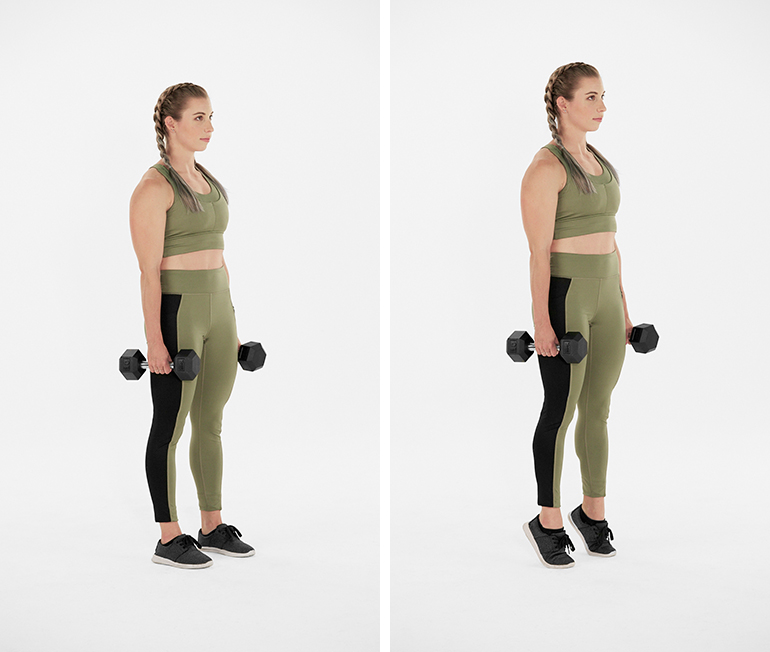
- Stand holding a pair of dumbbells at your sides with your feet hip-width apart, and toes facing forward.
- Rise onto the balls of your feet as high as you can, squeezing your calf muscles at the top of the move.
- Pause, then lower your heels back down in a slow, controlled motion. (Go too fast, and your Achilles tendon will do more work than your calf muscles.)
- Repeat as desired, maintaining that slow tempo.
2. Seated Calf Raise
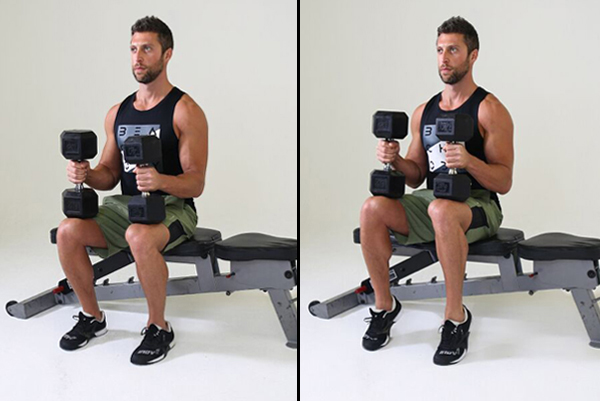
- Sit tall on a bench or chair with your feet flat on the ground, holding two medium to heavy dumbbells on top of your knees. (Make sure the weights are positioned atop muscle and not bone.)
- Keeping your core engaged, lift your heels off the ground as high as possible.
- Slowly lower your heels back down to the ground and repeat.
3. Single-Leg Calf Raise
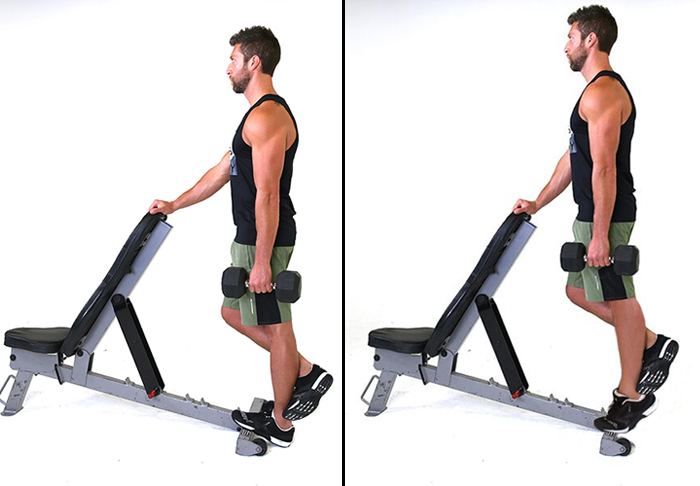
- Hold a dumbbell in your right hand by your side and place the ball of your right foot on an elevated surface (the base of an incline bench, an aerobic step, or a weight plate all work well).
- Cross your left ankle behind your right, hold onto the wall, a rail or other sturdy surface for balance, and slowly lower your right heel toward the floor (without making contact).
- Lift the heel of your right foot as high as you can, giving your right calf a squeeze at the top of the movement.
- Pause, and then lower yourself back to the starting position. Perform equal reps on both sides.
4. Farmer’s Walk on Toes
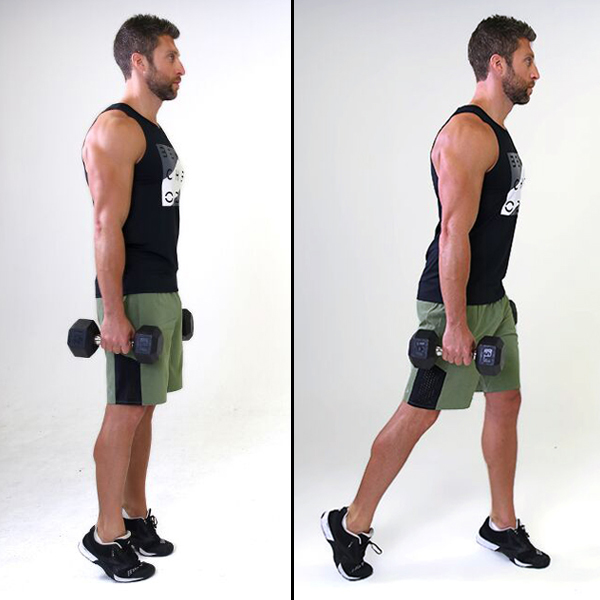
- Hold a pair of medium to heavy dumbbells at your sides with your feet hip-width apart.
- Keeping your shoulders down and back, and your core engaged, lift your heels so you’re standing on your toes.
- Without letting your heels touch the ground, walk forward for a set number of reps or time.
5. Donkey Calf Raise
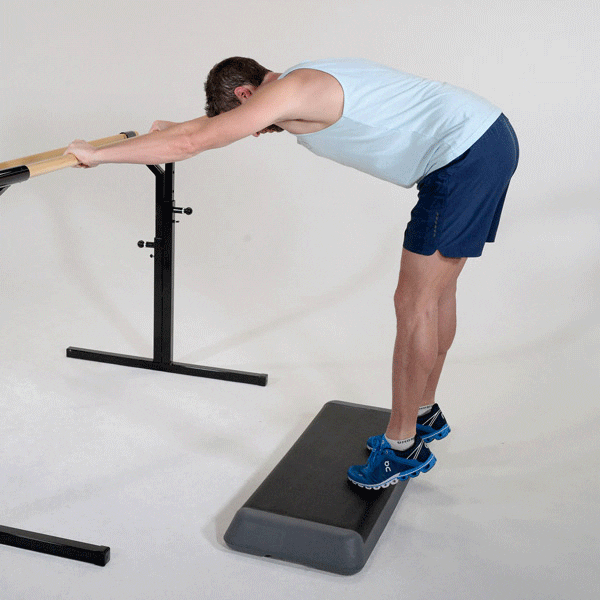
- Stand on a short step or weight plate with the balls of your feet on its far edge.
- Hinge forward at your waist so your back is flat, and hold onto an incline bench, rail, or sturdy chair around waist height using both hands.
- Without bending your knees, slowly lower your heels to the floor as far as possible, and then pause for a one-count.
- Lift your heels as high as possible, squeezing your calf muscles at the top of the move and holding for a one-count.
- Take a full three-count to lower your heels to the floor, and repeat.
Why You Should Switch Up Your Calf Workouts
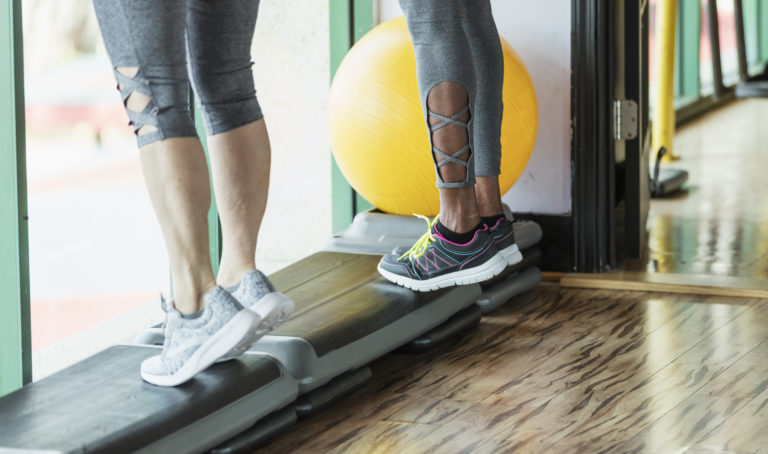
If your idea of working your calves involves knocking out a dozen reps of standing calf raises and calling it a day, you may be doing your lower leg muscles a disservice.
1. Seated and standing calf raises emphasize different muscles
Your calves are primarily made up of two muscles: the gastrocnemius (or gastroc, for short) and soleus.
The gastroc — the more visible of the two muscles — helps point your toes, as well as flex your knee and propel you forward (as in explosive exercises like jumping and sprinting).
Meanwhile, the less-visible soleus primarily helps you point your toes, and contributes more to endurance-focused activities like walking.
So, if you do any kind of exercise or activity, it’s important to work both calf muscles.
However, certain movements favor one calf muscle over the other.
“Standing calf exercises will emphasize the gastrocnemius, while seated calf raises may emphasize the soleus,” says Performance Recovery Coach Jennifer Novak, MS, CSCS.
2. Bodyweight and loaded calf raises train muscles differently
Similarly, doing calf exercises with or without added weight will change the focus of the exercise.
In general, bodyweight-only exercises (e.g., jump rope and bodyweight standing calf raises) will emphasize muscular endurance, while weighted exercises will more heavily target muscle strength and size, Novak says.
3. Elevation can intensify the calf raise
Meanwhile, performing calf exercises on a raised surface will allow you to strengthen your muscles through their full range of motion.
However, Novak recommends beginners stop before their heels drop below parallel in order to give their calf muscles time to adapt to the demands of the exercise.
4. Different foot angles work different parts of the calves
In addition to working different calf exercise variations into your workouts, you can also switch up the focus of any calf exercise by turning your toes in (to target the outer part of your calves) or out (to target the inner part of your calves), according to Novak.
Varying your calf exercises not only keeps your exercise routine fresh, it ensures your calves are strong from every angle.
